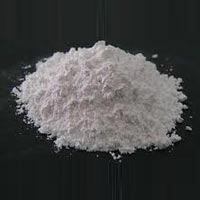Fat Lime (or) White Lime
Fat lime which is also called stone-lime or white lime is high calcium lime with about 6 per cent material insoluble in acid, chiefly obtained by burning (called calcination) in a kiln pure limestone, chalk or sea shells, etc. (calcium carbonate). By burning calcium carbonate, carbon dioxide is driven off as a gas leaving calcium oxide or quick-lime in the form of lumps. When water is poured over quick-lime it almost immediately cracks, swells and falls into powder with a hissing and creaking sound, slight explosions and considerable evolution of heat and steam. The process is called slaking or hydration, and the powder produced is called hydrated lime or slaked lime (calcium hydroxide). Quick-lime should be slaked as early as possible after it is burnt in a kiln. Over-burnt or under burnt pieces or lumps should be picked out and removed before slaking.
Quick-lime if left exposed to the air will absorb moisture and carbon dioxide and become an inert powder of calcium carbonate or chalk having no cementing power. Therefore, lime should be stored in an enclosed space in large heaps and air excluded as far as possible. Unslaked lime kept in air tight vessels, and slaked lime packed in gunny bags and stored in dry place will keep sound for months. All lime that has been in any way damaged by rain, moisture or dust should be rejected.
Test for freshness of fat lime (or) white lime. Unslaked lime weights about 1050 kg/cu.m, expands on slaking and then weighs 640 kg/cu. m when fresh, increasing to about 800 kg/cu. m after 10 days.

